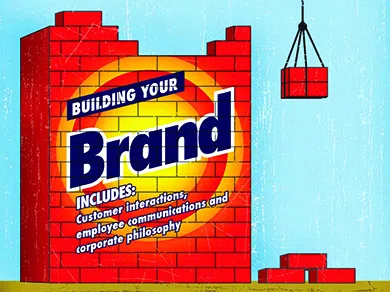Good references are too valuable to sales to give a half-hearted effort.
Harnessing the power of referrals seems like an obvious win. What could make more sense than to leverage the enthusiasm of happy customers to convince buyers that they need your products and services? And in an increasingly social and networked world — not to mention an economy where every dollar of revenue is critical — this type of third-party validation is more important than ever. So why do we have so much trouble mastering the art of customer advocacy?
Because companies don’t take it seriously. Salesforce.com CEO Marc Benioff put it best when he said that even though every company knows customer references are important, most companies have a lax approach to actually managing them. You can’t half-heartedly paste a few new tactics on top of your current operations and expect advocates to start singing your praises. Nor can you rely on a few enthusiastic supporters with vibrant personalities to carry your message. The program has to be well staffed so it becomes a seamless and well-integrated part of your entire growth engine. And it needs to command sufficient resources to kick it off strongly and to keep it going over time.
There are certain predictable mistakes companies make that can derail customer referral programs before they ever get off the ground. They are:
1. Lack of executive support.
A successful program needs significant resources and a strong rollout that involves the entire company. It must cross boundaries, working cooperatively with other divisions in your business such as sales, marketing, social media, PR, etc. Without strong, hands-on executive support from a powerful leader who is passionate about advocacy, none of this will happen.
2. Lack of imagination.
Many referral programs suffer from inertia, churning out old-school case studies that are way too long and that don’t get read. With advances in technology and social media — along with the current boom in personal and professional communities — those who adopt customer reference programs must think much more broadly about the forms advocacy can take. These may include testimonials, serving on advisory boards, and participating in your online customer communities.
3. “Cheaping out” on resources.
Referral programs are often organized as an afterthought, assigned as one of several programs to a junior-level employee who has too much to do, and managed with a spreadsheet. Someone may hand him a list of prospective references who may or may not be happy customers, or strategically significant, or even profitable. Before long, reference requests to the new program go wanting, as sales and marketing return to their old habits of trolling for references themselves, leading to underutilization of potential powerful references at one extreme, or burnout at the other. That’s business malpractice.
Enthusiastic references are extremely valuable to a business. They can close deals, convince skeptics, build your brand on their social networks, and much more. Reference programs deserve adequate resources to realize that potential.
4. Failure to install the right systems and processes.
This includes an adequate software program that automates as much of the data needs of the program as possible. And these needs can be considerable: Which references do you have from which customer segments? What requests have they fulfilled? What other advocacy activities do they engage in? What reference content have they provided? Where can you get your hands on it?
Ask yourself a few key questions: Do you have the right processes and policies in place? What policies have you established for references and testimonials in your sales and marketing efforts? At what points in the sales process should references be used? How will customer videos, stories, and other customer content be used in social media efforts? What rules have you established for customer content in your marketing communications?
5. Not integrating references into the growth strategy.
It’s easy to spot a reference program that’s disconnected from the company’s growth strategy. They look puzzled when you ask about the corporate strategy for growth. They recruit or keep customer references who may or may not be from markets that senior management is targeting. Everything they do and say tells you they’re out of the loop. Managers of reference programs that are well integrated into strategy can tell you what types of reference activities they’ll need to engage in.
6. Failure to measure (or even understand) the business value of references.
It’s a red flag when reference managers tout the number of new references they recruited — without regard to their actual value in generating business. They’re measuring inputs that have little bearing on business results, not outputs. More sophisticated programs continually measure their business value and adjust accordingly.
7. Not giving customers a good reason to reference them.
Many companies resort to gifts, prizes, awards, cash discounts, and even low-grade bribes to get customers to refer them. Not good. Smart companies think through why their customers would advocate for them — and come up with better and more ethical reasons than those. First, you provide a terrific product or service. That’s the price of admission. Then you get creative in providing appropriate reciprocal value to your potential advocate.
Does she like the limelight? Does she want to affiliate with her peers? Hopefully, you know your customer well enough to know what is valuable to her. Give it to her and she’ll give you an enthusiastic—and genuine—referral.
This last reason touches on the real reason customer reference programs work: They’re mutually beneficial to all parties involved.
If you don’t start with the right customer value proposition, nothing you do will matter. If you do, your program will be easier and more successful than you ever dreamed possible.
Bill Lee is the author of The Hidden Wealth of Customers: Realizing the Untapped Value of Your Most Important Asset and is an authority on the subject of customer advocacy and engagement.


